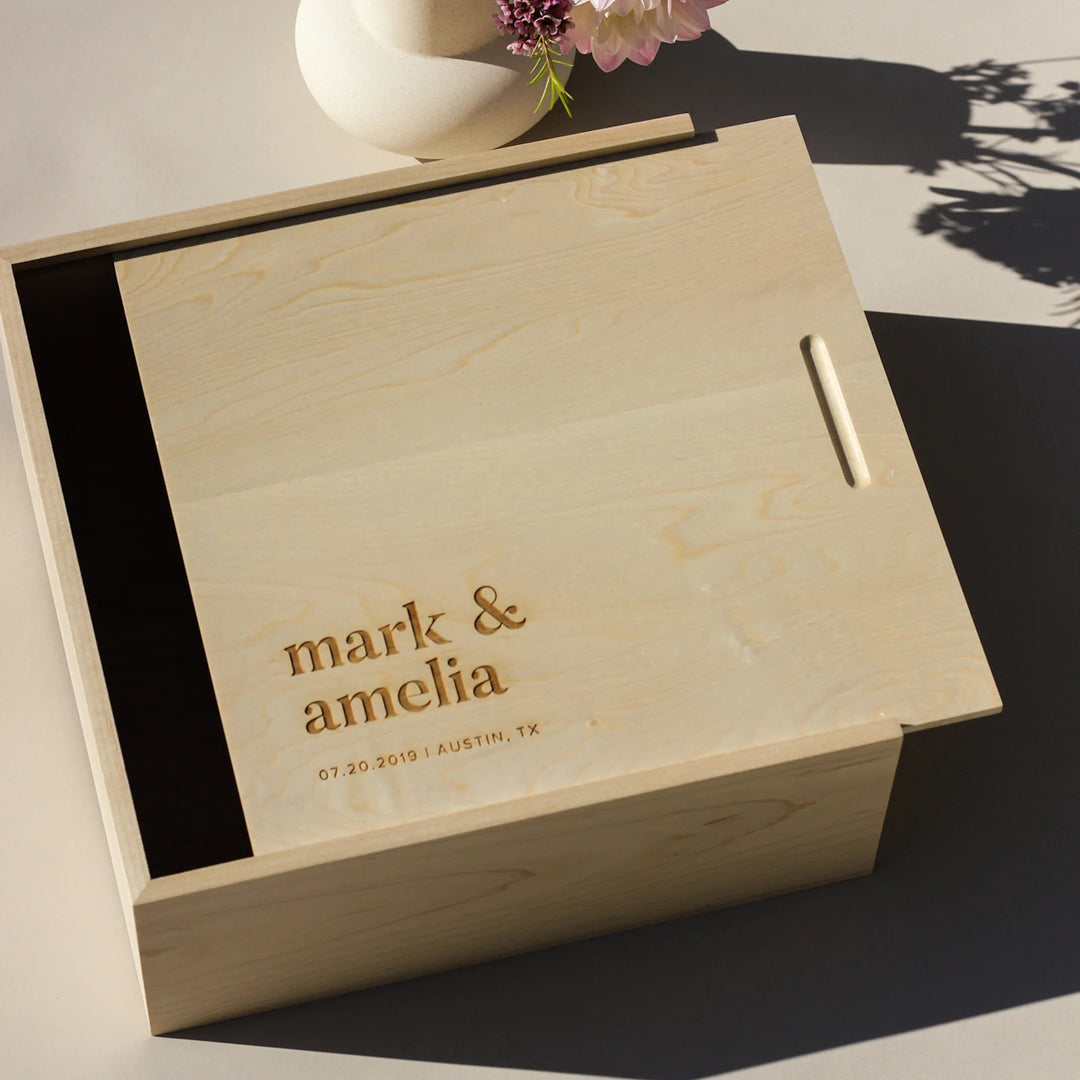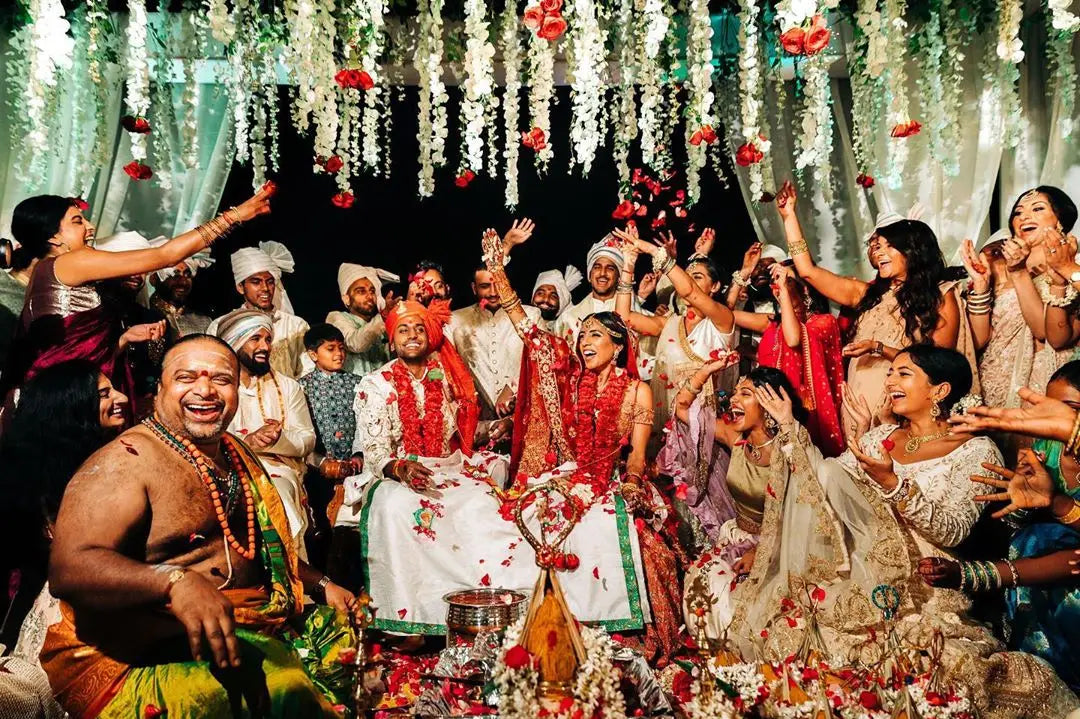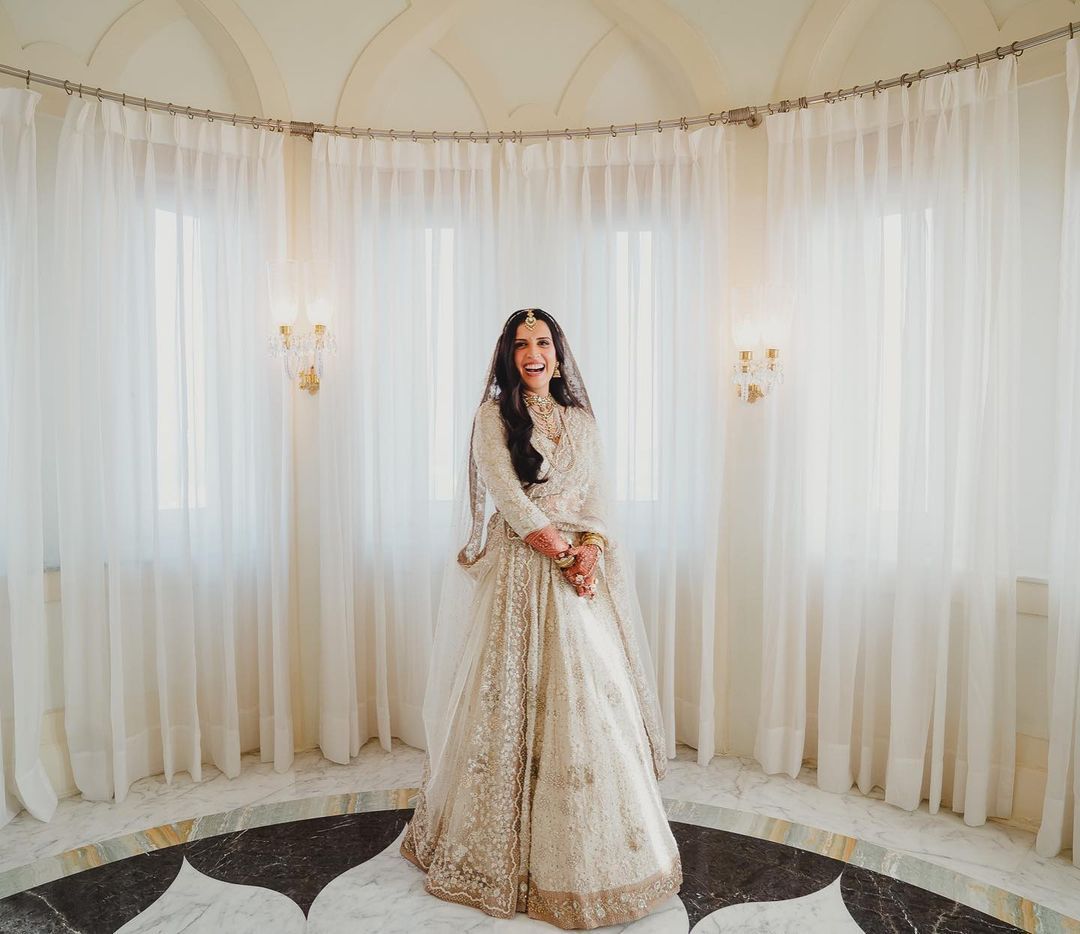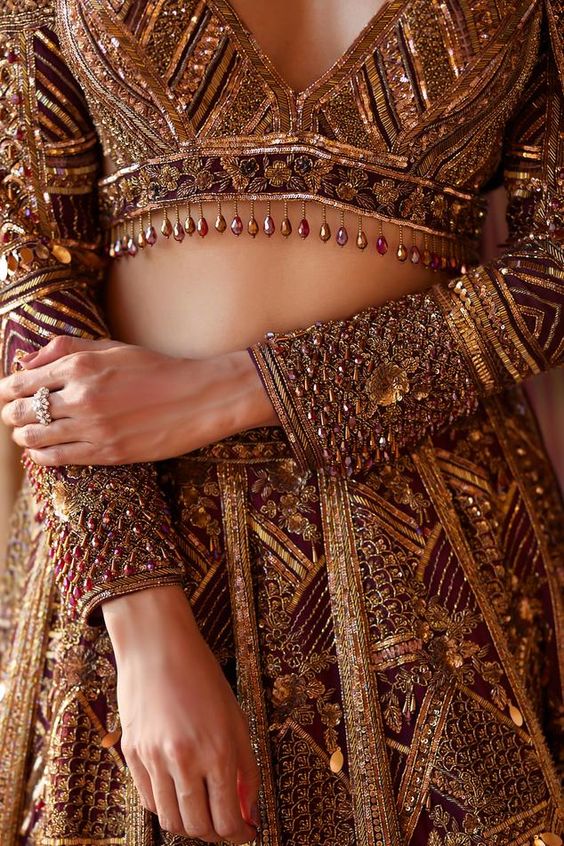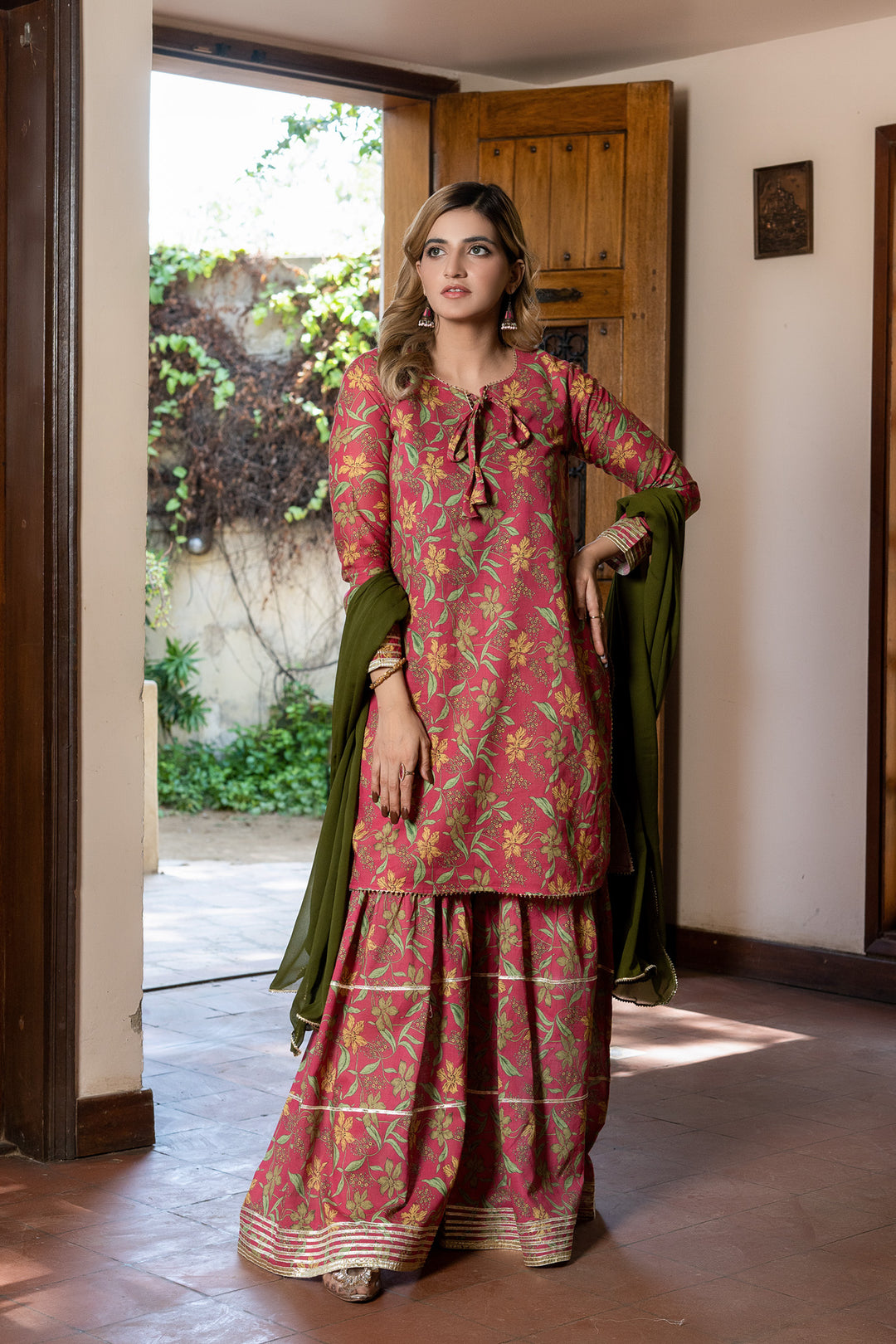Jewelry, Accessories, and Colors in South Asian Weddings
Table of Contents
Introduction
Hey lovely readers, Karigur here! If you think about South Asian weddings, what’s the first thing that comes to mind? Maybe it’s the shimmer of gold bangles softly clinking on a bride’s wrist, the gleam of a maang tikka perfectly balanced at the hairline, or the kaleidoscope of colours—crimson reds, lush greens, royal blues—that envelop the entire celebration. Jewelry, accessories, and colours go far beyond aesthetics. They’re woven into the very soul of these events, telling stories of heritage, faith, family, and the timeless journey of love.
In this expanded guide, we’ll delve deeper into each element, providing more cultural context, modern insights, and actionable tips. Whether you’re a bride considering heirloom pieces or a groom eager to add that perfect turban ornament, whether you love traditional reds or crave pastel palettes, we’ll explore it all. Let’s dive in and make sure every detail—from your earrings to your rang of colours—feels intentional, meaningful, and unmistakably “you.”
Cultural Significance
Jewelry and accessories in South Asian weddings stand at the intersection of history, family tradition, and spiritual depth. They’re far more than decorative objects:
- Blessings and Protection: Certain ornaments, like the mangalsutra in Hindu weddings or bangles bestowed by elders, carry protective blessings and good fortune for the couple’s future.
- Identity and Region: A Punjabi bride’s chura and kaleere differ from a Bengali bride’s shakha pola bangles, each reflecting its community’s unique customs. Explore more about these regional nuances in our Cultural Traditions Guide.
- Heirlooms and Heritage: Many families pass down jewelry through generations, each piece carrying stories of past weddings, ancestral blessings, and cultural continuity.
In essence, jewelry serves as a cultural fingerprint—identifying where you come from and how you’ve evolved, honouring both past and present. By embracing these elements, you’re not just wearing ornaments; you’re donning centuries of tradition and family love.
Bridal Jewelry Essentials
As a bride, assembling your jewelry box can feel like putting together a visual poem. Each piece must harmonize with your outfit, your personal style, and your cultural traditions.
Maang Tikka
This forehead ornament is often considered the centerpiece of a bride’s look. It sits along the hairline, drawing attention to the bride’s eyes and symbolizing the union of two souls at the ajna chakra (the spiritual center between the eyebrows). *(More details in Maang Tikka Styling Tips)*
Nath (Nose Ring)
The nath or nose ring varies by region—some are delicate loops, others ornate, sometimes connected to the hair by a chain. It’s believed to represent prosperity and is often worn on the wedding day for that extra touch of cultural authenticity.
Jhumkas & Earrings
Jhumkas, chandelier-like earrings, are timeless classics. They frame the face and complement the maang tikka. Smaller studs, large chandbalis, or ear cuffs are all options, depending on whether you prefer a statement look or something understated.
Necklaces & Rani Haars
The necklace is arguably one of the most eye-catching pieces. A layered necklace set—like a choker paired with a longer, more elaborate rani haar—can elevate your bridal ensemble. Consider details like pearls, polki diamonds, or kundan work. *(Learn more in Layering Necklaces Like a Pro)*
Chura & Kaleere
In North Indian (especially Punjabi) weddings, the bride wears a set of red and white bangles called chura, which symbolize prosperity and fertility. Hanging kaleere (metallic ornaments) are tied to the chura, and a fun ritual involves the bride shaking them over unmarried friends, bestowing them with luck for marriage.
Haathphool, Kamarbandh & Other Accessories
Haathphool (Hand Harness): Connects finger rings to a bracelet, adorning the back of the hand. Kamarbandh (Waist Belt): Accentuates the waist and keeps the bridal dupatta or saree pleats in place. Paasa: A side headpiece often worn by Muslim brides, adding a regal, vintage vibe.
Anklets & Toe Rings
These might be subtle, but they carry deep meaning. In Hindu traditions, married women often wear toe rings. Anklets with tiny bells can add a gentle tinkling sound as the bride walks, lending a sense of grace and tradition.
As a bride, consider your comfort, the weight of heavy earrings or layered necklaces, and how these pieces will interact with your chosen outfit. Perhaps pair a heavily embroidered lehenga with simpler jewelry, or let a minimalist outfit shine with a dramatic statement necklace. The beauty is in the balance you create.
Groom Accessories
It’s not just the brides who get to shine. Grooms, too, have a rich repertoire of accessories that complete their wedding look and reflect their cultural backgrounds.
Safa/Pagri (Turbans)
The groom’s turban is iconic. Tied differently across regions, it can match the bride’s outfit or stand in contrast. A sarpech (turban ornament) or a feather can be added for a touch of royal flair. *(Get tips from our Groom Attire Guide)*
Brooches, Kalgi & Ceremonial Swords
A brooch on the sherwani or the turban, a kalgi (front turban ornament), or even a ceremonial sword (in Sikh or Rajput traditions) represent valor, tradition, and elegance. These accessories often carry historical significance.
Neckpieces for Grooms
Men’s jewelry might include a simple pearl string or a more elaborate polki necklace to complement a richly embroidered sherwani. The key is balance—choose pieces that enhance your attire without overshadowing it.
Color Palettes
Colours in South Asian weddings are like characters in a play—they each bring their own energy and symbolism. For modern couples, pastels offer a gentle charm.
Traditional Colors and Their Symbolism
Red: The classic bridal colour. Symbolizes love, fertility, and prosperity. Green: Harmony, life, and new beginnings. Gold: Royalty, grandeur, and wealth. Maroon, Deep Pink, and Orange: Variations on the traditional warm palette that still carry auspicious connotations.
These colours have deep roots in cultural and religious traditions, making them popular choices for main ceremonies.
Modern Hues: Pastels, Metallics & Neutrals
Todays’ brides and grooms are experimenting with fresh palettes:
- Pastels: Baby pink, mint green, lavender—soft hues that add a modern, romantic touch.
- Metallics: Silver, rose gold, or champagne bring glamour and sophistication to an event.
- Neutrals: Ivory, beige, and blush are understated yet elegant, making bold jewelry pop.
Consider what narrative you want to tell. Are you honouring tradition with a bold red lehenga, or forging a new path with a pastel blue saree or an off-white sherwani?
For more inspiration, see our Modern Bridal Color Trends and Groom’s Contemporary Colour Guide.
Coordinating Colours with Jewelry & Outfits
To achieve visual harmony, view your attire, jewelry, and décor as parts of a cohesive story. If your outfit features gold zari, gold jewelry ties it all together, enhancing a royal vibe. A pastel lehenga might call for pearls or uncut diamonds that maintain a soft, romantic aura. For bolder colours, consider enamel jewelry or coloured gemstones that match the embroidery on your attire. If you’re feeling uncertain, neutrals—pearls, uncut diamonds, ivory accessories—generally adapt to most shades without clashing.
Try creating a mood board early in your planning process. Include fabric swatches, jewelry styles, and even snippets of your wedding décor. This helps ensure everything complements each other smoothly.
Seasonal & Event Colors
Adapting colours and accessories to the event and season can elevate the experience:
- Mehndi & Sangeet: Go bold with citrusy yellows, bright pinks, and greens. Floral jewelry or chunky costume pieces can add playful charm.
- Haldi: Stick to yellows and whites—minimal jewelry, maybe a simple pair of earrings or a floral bracelet to avoid staining.
- Winter Weddings: Jewel tones like emerald, sapphire, and ruby pair beautifully with heavier fabrics and ornate jewelry. Imagine a ruby choker glinting under candlelight in a cozy hall.
- Summer Weddings: Embrace pastels, lightweight fabrics, and delicate jewelry that won’t weigh you down or reflect too much heat.
By syncing your choices with the environment, you ensure comfort and aesthetic cohesiveness. Guests might not articulate it, but they’ll feel the harmony in every detail.
Fusion & Minimalism
Not every bride or groom wants to be decked out in heavy jewelry. Some prefer a minimalist or fusion approach:
- Fusion Attire: A lehenga with a contemporary blouse paired with a statement necklace and no earrings, or a bandhgala suit with just a pocket square and a sleek brooch. (*More ideas in Fusion Bridal Attire Ideas and Fusion Groom Attire Inspirations.)
- Minimalist Jewelry: One statement piece—like a standout choker—can sometimes make a bigger impact than multiple layers of ornaments.
- Mixing Metals: Don’t be afraid to mix gold, rose gold, and silver for a contemporary look that defies tradition while still looking harmonious.
Minimalism is a mindset—less can indeed be more, especially if it feels authentic to you.
Practical Tips
- Start Early: Explore options at least 3-4 months ahead. Some jewelry may need custom crafting, and you’ll want time for revisions.
- Budget Wisely: Identify your hero pieces (that one necklace, a special pair of earrings) and complement them with more affordable options. Quality costume jewelry can blend seamlessly with precious pieces if chosen wisely.
- Check Comfort: Wear heavier pieces during a dress rehearsal. Can you dance in those earrings? Will that large necklace scratch your neckline? Adjust accordingly.
- Communicate with Your Partner: Coordinate colours or themes, so both ensembles sing the same tune. If you’re wearing pastel pink, maybe your partner chooses an accessory or tie that echoes that shade.
- Reuse Potential: Invest in pieces you can wear again—festivals, anniversaries, family gatherings. It makes the purchase more meaningful and sustainable.
Feeling inspired and confident? Explore our How to Choose Bridal Jewelry Step-by-Step or Modern Bridal Color Trends for deeper guidance. Bookmark this guide and share it with your partner or bridal party. Make choices that celebrate your love story and ensure every jewel, hue, and accessory holds a cherished place in your memory.
Real Stories & Inspiration
Learning from real couples can spark your own ideas:
- Rina’s Pastel Vision: A pastel lehenga paired with a single polki choker allowed Rina’s delicate embroidery to stand out. This subtlety turned her garden wedding into a serene fairytale. Read Full Story
- Aditya & Noor’s Fusion Affair: A Sikh groom and a Muslim bride blended their traditions seamlessly. He chose a pearl mala, while she wore antique gold jhumkas that echoed historical elegance. Their coordinated pastel outfits and harmonious accessories made cultural fusion look effortless. Explore Fusion Weddings
- Kavya’s Minimalist Approach: Kavya wore a sleek ivory saree with one rose gold statement necklace. Striking a balance between modern minimalism and cultural grace, she proved that sometimes less truly is more. Minimalist Bridal Looks
These stories show that there’s no single formula. Combine your intuition, cultural roots, and a willingness to experiment. The result? A wedding style that feels deeply, authentically yours.
FAQs
- Do I have to follow every traditional jewelry custom?
- No. Tradition is meaningful, but so is personal comfort. If a heavy maang tikka feels too cumbersome, choose a lighter piece or adapt the style.
- How can I be sure colours won’t clash?
- Create a visual board with your attire, jewelry photos, and décor samples. Stick to a few key colours and let neutrals (like pearls) adapt to your scheme.
- Is mixing heirlooms with modern pieces okay?
- Absolutely. Combining an antique necklace with contemporary earrings creates a unique style narrative that bridges past and present.
- What if I’m on a tight budget?
- Invest in one or two show-stopper pieces and fill the rest with high-quality costume jewelry. Many brides and grooms do this seamlessly to maintain style without overspending.
For more insights, watch out for upcoming Q&A sections: Jewelry & Accessory Q&A and Color Coordination Q&A.
Potential Sub-Articles & Supporting Articles
- Maang Tikka Styling Tips
- Layering Necklaces Like a Pro
- Modern Bridal Color Trends
- Groom’s Contemporary Color Guide
- Fusion Bridal Attire Ideas
- Fusion Groom Attire Inspirations
- How to Choose Bridal Jewelry Step-by-Step
- Minimalist Bridal Looks
Ready to refine your wedding style even further? Explore these sub-articles for deeper insights. Keep this guide close as you curate your dream look—one that speaks of heritage, love, innovation, and the promise of a beautiful life ahead.





